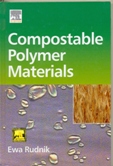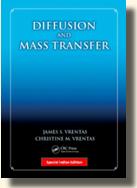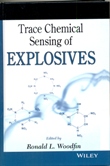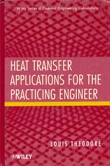
|
COMPOSTABLE POLYMER MATERIALS ,INDIAN REPRINT - EWA RUDNIK (EX) |
|
|
Cover Price : Rs 2,495.00
|
Imprint : Elsevier
ISBN : 9789382291237
YOP : 2013
|
Binding : Hardbound
Total Pages : 224
CD : No
|
|
Compostable Polymer Materials deals with an environmentally important family of polymers. These compostable polymers are specially designed to be disposed of in industrial and municipal compost facilities after their useful lives. They are able to undergo degradation and leave no visible, distinguishable or toxic residue. Environmental concerns and legislative measures taken in different regions of the world make composting an increasingly attractive route for the disposal of redundant polymers.
This book provides up-to-date results and information about compostable polymer materials in a coherent and comprehensive manner. It covers the entire spectrum of preparation, properties, degradation, and environmental issues. The emphasis is on recent studies concerning compostability and ecotoxicological assessment of polymer materials--important issues from the ecological point of view. Moreover, the thermal behavior of compostable polymers is described. Their price evolution over the past decade, an estimation of the market and future perspectives are presented.
This book is aimed at polymer scientists and chemical engineers as well as scientists working in the fields of ecology and environmental science.
Contents
1. Introduction
2. Compostable polymer materials – definitions, structure and methods of preparation
3. Properties and applications
4. Thermal and thermooxidative degradation
5. Composting methods and legislation
6. Biodegradability testing of compostable polymer materials
7. Ecotoxicological assessement
8. Environmental impact of compostable polymer materials
9. Perspectives
Index |
|
 |

|
Diffusion and Mass Transfer - Vrentas |
Author |
Annie James
Christine Vrentas
|
|
Cover Price : Rs 5,995.00
|
Imprint : CRC Press
ISBN : 9781498798204
YOP : 2016
|
Binding : Hardbound
Total Pages : 644
CD : No
|
|
About the Book :-
Features
Provides a comprehensive summary of the theoretical aspects of diffusion and mass transfer
Analyzes a wide variety of mass transfer problems
Explains and shows the use of solution methods such as Green’s functions, perturbation methods, and similarity transformations
Considers various aspects of polymer behavior, including polymer diffusion, sorption in polymers, and volumetric behavior of polymer–solvent systems
Discusses the free-volume theory for the prediction of self-diffusion coefficients for polymer–solvent systems
Summary
A proper understanding of diffusion and mass transfer theory is critical for obtaining correct solutions to many transport problems. Diffusion and Mass Transfer presents a comprehensive summary of the theoretical aspects of diffusion and mass transfer and applies that theory to obtain detailed solutions for a large number of important problems. Particular attention is paid to various aspects of polymer behavior, including polymer diffusion, sorption in polymers, and volumetric behavior of polymer–solvent systems.
The book first covers the five elements necessary to formulate and solve mass transfer problems, that is, conservation laws and field equations, boundary conditions, constitutive equations, parameters in constitutive equations, and mathematical methods that can be used to solve the partial differential equations commonly encountered in mass transfer problems. Jump balances, Green’s function solution methods, and the free-volume theory for the prediction of self-diffusion coefficients for polymer–solvent systems are among the topics covered. The authors then use those elements to analyze a wide variety of mass transfer problems, including bubble dissolution, polymer sorption and desorption, dispersion, impurity migration in plastic containers, and utilization of polymers in drug delivery. The text offers detailed solutions, along with some theoretical aspects, for numerous processes including viscoelastic diffusion, moving boundary problems, diffusion and reaction, membrane transport, wave behavior, sedimentation, drying of polymer films, and chromatography.
Presenting diffusion and mass transfer from both engineering and fundamental science perspectives, this book can be used as a text for a graduate-level course as well as a reference text for research in diffusion and mass transfer. The book includes mass transfer effects in polymers, which are very important in many industrial processes. The attention given to the proper setup of numerous problems along with the explanations and use of mathematical solution methods will help readers in properly analyzing mass transfer problems.
Contents :-
Introduction
Generalized Transport Phenomena Approach to Problem Analysis
General Content
Conservation Laws and Field Equations
Concentrations, Velocities, and Fluxes
Thermodynamics of Purely Viscous Fluid Mixtures
Conservation of Mass for a One-Component System
Conservation of Mass for a Mixture
Modification of Field Equations for Mass Transfer
Conservation of Linear Momentum for One-Component Systems
Conservation of Linear Momentum for a Mixture
Conservation of Moment of Momentum for One-Component Systems
Conservation of Moment of Momentum for a Mixture
Strategies for the Solution of Mass Transfer Problems
Boundary Conditions
Definitions
Jump Balances for Mass Conservation
Jump Balances for Linear Momentum Conservation
Postulated Boundary Conditions at Phase Interfaces
Boundary Conditions in the Absence of Mass Transfer
Utilization of Jump Balances
Additional Comments on Boundary Conditions
Boundary Conditions and Uniqueness of Solutions
Constitutive Equations
Constitutive Principles
First-Order Theory for Binary Systems
Combined Field and Constitutive Equations for First-Order Binary Theory
First-Order Theory for Ternary Systems
Special Second-Order Theory for Binary Systems
Viscoelastic Effects in Flow and Diffusion
Validity of Constitutive Equations
Parameters in Constitutive Equations
General Approach in Parameter Determination
Diffusion in Polymer–Solvent Mixtures
Diffusion in Infinitely Dilute Polymer Solutions
Diffusion in Dilute Polymer Solutions
Diffusion in Concentrated Polymer Solutions – Free-Volume Theory for Self-Diffusion
Diffusion in Concentrated Polymer Solutions – Mutual Diffusion Process
Diffusion in Crosslinked Polymers
Additional Properties of Diffusion Coefficients
Special Behaviors of Polymer–Penetrant Systems
Volumetric Behavior of Polymer–Penetrant Systems
Sorption Behavior of Polymer–Penetrant Systems
Antiplasticization
Nonequilibrium at Polymer–Penetrant Interfaces
Mathematical Apparatus
Basic Definitions
Classification of Second-Order Partial Differential Equations
Specification of Boundary Conditions
Sturm–Liouville Theory
Series and Integral Representations of Functions
Solution Methods for Partial Differential Equations
Separation of Variables Method
Separation of Variables Solutions
Integral Transforms
Similarity Transformations
Green’s Functions for Ordinary Differential Equations
Green’s Functions for Elliptic Equations
Green’s Functions for Parabolic Equations
Perturbation Solutions
Weighted Residual Method
Solution Strategy for Mass Transfer Problems
Proposed Solution Methods
Induced Convection
Solutions of a General Set of Mass Transfer Problems
Mixing of Two Ideal Gases
Steady Evaporation of a Liquid in a Tube
Unsteady-State Evaporation
Analysis of Free Diffusion Experiments
Dissolution of a Rubbery Polymer
Bubble Growth from Zero Initial Size
Stability Behavior and Negative Concentrations in Ternary Systems
Analysis of Impurity Migration in Plastic Containers
Efficiency of Green’s Function Solution Method
Mass Transfer in Tube Flow
Time-Dependent Interfacial Resistance
Laminar Liquid Jet Diffusion Analysis
Analysis of the Diaphragm Cell
Dissolved Organic Carbon Removal from Marine Aquariums
Unsteady Diffusion in a Block Copolymer
Drying of Solvent-Coated Polymer Films
Flow and Diffusion Past a Flat Plate with Solid Dissolution
Gas Absorption in Vertical Laminar Liquid Jet
Utilization of Polymers in Drug Delivery
Gas Absorption and Diffusion into a Falling Liquid Film
Perturbation Solutions of Mass Transfer Moving Boundary Problems
Dissolution of a Plane Surface of a Pure Gas Phase
Bubble Dissolution
Singular Perturbations in Moving Boundary Problems
Dropping Mercury Electrode
Sorption in Thin Films
Numerical Analysis of Mass Transfer Moving Boundary Problems
Diffusion and Reaction
Design of a Tubular Polymerization Reactor
Transport Effects in Low-Pressure CVD Reactors
Solution of Reaction Problems with First-Order Reactions
Plug Flow Reactors with Variable Mass Density
Bubble Dissolution and Chemical Reaction
Danckwerts Boundary Conditions for Chemical Reactors
Transport in Nonporous Membranes
Assumptions Used in the Theory for Membrane Transport
Steady Mass Transport in Binary Membranes
Steady Mass Transport in Ternary Membranes
Unsteady Mass Transport in Binary Membranes
Phase Inversion Process for Forming Asymmetric Membranes
Pressure Effects in Membranes
Analysis of Sorption and Desorption
Derivation of a Short-Time Solution Form for Sorption in Thin Films
Sorption to a Film from a Pure Fluid of Finite Volume
A General Analysis of Sorption in Thin Films
Analysis of Step-Change Sorption Experiments
Integral Sorption in Glassy Polymers
Integral Sorption in Rubbery Polymers
Oscillatory Diffusion and Diffusion Waves
Dispersion and Chromatography
Formulation of Taylor Dispersion Problem
Dispersion in Laminar Tube Flow for Low Peclet Numbers
Dispersion in Laminar Tube Flow for Long Times
Dispersion in Laminar Tube Flow for Short Times
Analysis of an Inverse Gas Chromatography Experiment
Effects of Pressure Gradients on Diffusion: Wave Behavior and Sedimentation
Wave Propagation in Binary Fluid Mixtures
Hyperbolic Waves
Dispersive Waves
Time Effects for Parabolic and Hyperbolic Equations
Sedimentation Equilibrium
Viscoelastic Diffusion
Experimental Results for Sorption Experiments
Viscoelastic Effects in Step-Change Sorption Experiments
Slow Bubble Dissolution in a Viscoelastic Fluid
Transport with Moving Reference Frames
Relationships Between Fixed and Moving Reference Frames
Field Equations in Moving Reference Frames
Steady Diffusion in an Ultracentrifuge
Material Time Derivative Operators
Frame Indifference of Material Time Derivatives
Frame Indifference of Velocity Gradient Tensor
Rheological Implications
Appendix: Vector and Tensor Notation
General Notation Conventions
Vectors
Tensors
Results for Curvilinear Coordinates
Material and Spatial Representations
Reynolds’ Transport Theorem
About the Author
James S. Vrentas received his B.S. degree in chemical engineering from the University of Illinois and his M.Ch.E. and Ph.D. degrees in chemical engineering from the University of Delaware. As the Dow Professor of Chemical Engineering at the Pennsylvania State University, he teaches and conducts research in the fundamental aspects of diffusion and fluid mechanics. He is the recipient of two national AIChE awards, the William H. Walker Award for Excellence in Contributions to the Chemical Engineering Literature and the Charles M. A. Stine Award for Materials Engineering and Science. At Penn State, he has received the College of Engineering’s Premier Research Award and several teaching awards.
Christine M. Vrentas received her B.S. degree in chemical engineering from the Illinois Institute of Technology and her M.S. and Ph.D. degrees in chemical engineering from Northwestern University where she studied the dynamic and transient properties of polymer solutions. She has served as an instructor at the Pennsylvania State University and is currently an adjunct professor in the chemical engineering department working in the areas of diffusion and fluid mechanics. As a public school volunteer and supporter of science education, she helped coach State College Area Middle and High School Science Olympiad teams to national gold medals and served as a regional and state event supervisor at Science Olympiad competitions.
|
|
 |

|
TRACE CHEMICAL SENSING OF EXPLOSIVES , INDIAN REPRINT - RONALD L. WOODFIN (EX) |
|
|
Cover Price : Rs 3,995.00
|
Imprint : Wiley
ISBN : 9788126540976
YOP : 2013
|
Binding : Hardbound
Total Pages : 390
CD : No
|
|
This timely book covers the most recent developments in the chemical detection of explosives in a variety of environments. Beginning with a broad view of the need for and the potential applications of chemical sensing, the book considers the issue of how to effectively include chemical sensing into systems designed to find hidden explosives devices. Offering a firsthand look at the latest technologies direct from those who are actively developing them, the book features:
• A look at the history of the field, including the contributions of recent programs
• A brief explanation of the chemistry of various explosives and differences in the behavior of their molecules as they are released from a source and migrate to a place where they may be detected
• An introduction to the problems presented by trace element sensing
• An overview and comparison of the technologies currently being used and developed
• Case studies of field experiences with chemical sensors
• A look at the emerging threat of non-traditional explosives
This book is an important reference for explosives engineers, systems engineers involved in the development of related devices, government agencies and NGOs involved in demining efforts, military and law enforcement specialists in mines and explosive ordinance disposal (EOD), as well as environmental scientists and chemists involved in explosives research.
In addition to providing field workers with knowledge that will help them decide where and how to search for explosives using chemical sensors. It will provide them with an understanding of the potential and the limitations of chemical sensing in their search for and identification of dangerous devices.
Contents
Foreword.
Preface.
List of Contributors.
PART I: FUNDAMENTAL CONSIDERATIONS.
Chapter 1. Chemical Sensing.
Chapter 2. What to Detect?
Chapter 3. Dangerous Innovations.
Chapter 4. Where Should We Look For Explosive Molecules?
Chapter 5. Structure of Turbulent Chemical Plumes.
PART II: FIELD EXPERIENCE.
Chapter 6. Detection of Trace Explosive Signatures in the Marine Environment.
Chapter 7. Explosives Detection Using Ultrasensitive Electronic Vapor Sensors: Field Experience.
Chapter 8. Reflections on Hunting Mines By Aroma Sensing.
PART III: EXAMPLE SENSING TECHNOLOGIES.
Chapter 9. Explosives Detection Based on Amplifying Fluorescence Polymers.
Chapter 10. Ion Mobility Spectrometry.
Chapter 11. Mass Spectrometry For Security Screening of Explosives.
Chapter 12. Explosive Vapor Detection Using Microcantilever Sensors.
Chapter 13. Lab-On-A-Chip Detection of Explosives.
Chapter 14. Nanoscale Sensing Assemblies Using Quantum Dot-Protein Bioconjugates.
Chapter 15. Remote Sensing of Explosive Materials Using Differential Reflection Spectroscopy.
PART IV: SUPPLEMENTARY MATERIAL.
Appendix : Organizations Involved in Searching For Hidden Explosives.
Definitions, Symbols and Abbreviations.
Explosives Definitions.
Bibliography.
Index.
Ronald L. Woodfin, PHD, is a retired systems engineer of Sandia National Laboratories, where he held the title principal member of the technical staff. With special interests in techniques related to mine warfare and humanitarian demining, Woodfin has served on several National Research Council Committees, including the Committee on Review and Evaluation of the Army Non-Stockpile Chemical Material Disposal Program and the Committee for Mine Warfare Assessment of the Naval Studies Board. He also chaired the chemical sensing sessions in the Fifth, Sixth, and Seventh International Symposia on Technology and the Mine Problem. |
|
 |

|
Heat Transfer Application for the Practicing Engineer - Louis Theodore |
|
|
Cover Price : $ 127.95
|
Imprint : Wiley
ISBN : 9780470643723
YOP : 2011
|
Binding : Hardbound
Total Pages : 662
CD : No
|
|
It is hard to imagine an area of study in engineering and/or science for which a basic knowledge and understanding of heat transfer is not an integral part of the discipline .Written at a level that is understandable to both students and practitioners, Heat Transfer Applications for the Practicing Engineer takes a highly pragmatic approach to this important topic. The book's coverage is thorough, its presentation is logical, and it addresses students' needs as well as the needs of the practicing professional.
Although geared towards chemical, mechanical, civil, and environmental engineers working on real-world industrial applications, applied scientists will also find the text a useful reference.
The book is divided into four parts. Part I addresses basic engineering principles. Part II is concerned with heat transfer fundamentals, particularly as they apply to conduction, convection, and radiation. Part III extends the material presented earlier to real-world heat transfer applications. Part IV provides ABET (Accreditation Board for Engineering and Technology) material from a heat transfer perspective. The text features:
-Coverage of topics from the ground up for those readers with little to no background in heat transfer
-Clear, precise explanations on how to carry out calculations associated with heat transfer
-Bridges the gap between heat transfer theory and practice
-Provides specific heat exchange operation, maintenance, and inspection (OH&I) details
-Presents rules of thumb suggestions for heat exchanger design and predictive purposes
-Nearly 300 illustrative examples
-Material that prepares one for the professional engineer's exam
Additional problems on a Wiley website; solutions to these problems plus exams are available for those who adopt the text
Readers will gain a solid working knowledge of heat transfer fundamentals, principles, and applications upon completion of this text, and be better prepared to pass the professional engineer's exam, address more advanced material, and solve more complex problems.
Contents
Contents
Preface xv
Introductory Comments xvii
Part One Introduction
1. History of Heat Transfer
2. History of Chemical Engineering: Transport Phenomena vs Unit Operations
3. Process Variables
4. Conservation Laws
5. Gas Laws
6. Heat Exchanger Pipes and Tubes
Part Two Principles
7. Steady-State Heat Conduction
8. Unsteady-State Heat Conduction
9. Forced Convection
10. Free Convection
11. Radiation
12. Condensation and Boiling
13. Refrigeration and Cryogenics
Part Three Heat Transfer Equipment Design Procedures and Applications
14. Introduction to Heat Exchangers
15. Double Pipe Heat Exchangers
16. Shell and Tube Heat Exchangers
17. Fins and Extended Surfaces
18. Other Heat Exchange Equipment
19. Insulation and Refractory
20. Operation, Maintenance, and Inspection (OM&I)
21. Entropy Considerations and Analysis
22. Design Principles and Industrial Applications
23. Environmental Management
24. Accident and Emergency Management
25. Ethics
26. Numerical Methods
27. Economics and Finance
28. Open-Ended Problems
References
Appendix A. Units
Appendix B. Tables
Appendix C. Figures
Appendix D. Steam Tables
Index
Louis Theodore EngScD, a professor of chemical engineering for fifty years, is the author of many Wiley books, including Fluid Flow for the Practicing Chemical Engineer, Thermodynamics for the Practicing Engineer, and Mass Transfer Operations for the Practicing Engineer. He is also a contributor and Section Editor to Perry's Chemical Engineers' Handbook and coauthor of Introduction to Hazardous Waste Incineration, Second Edition, which is also published by Wiley. Dr. Theodore is currently a consultant to Theodore Tutorials, located in East Williston, New York.
|
|
 |
|